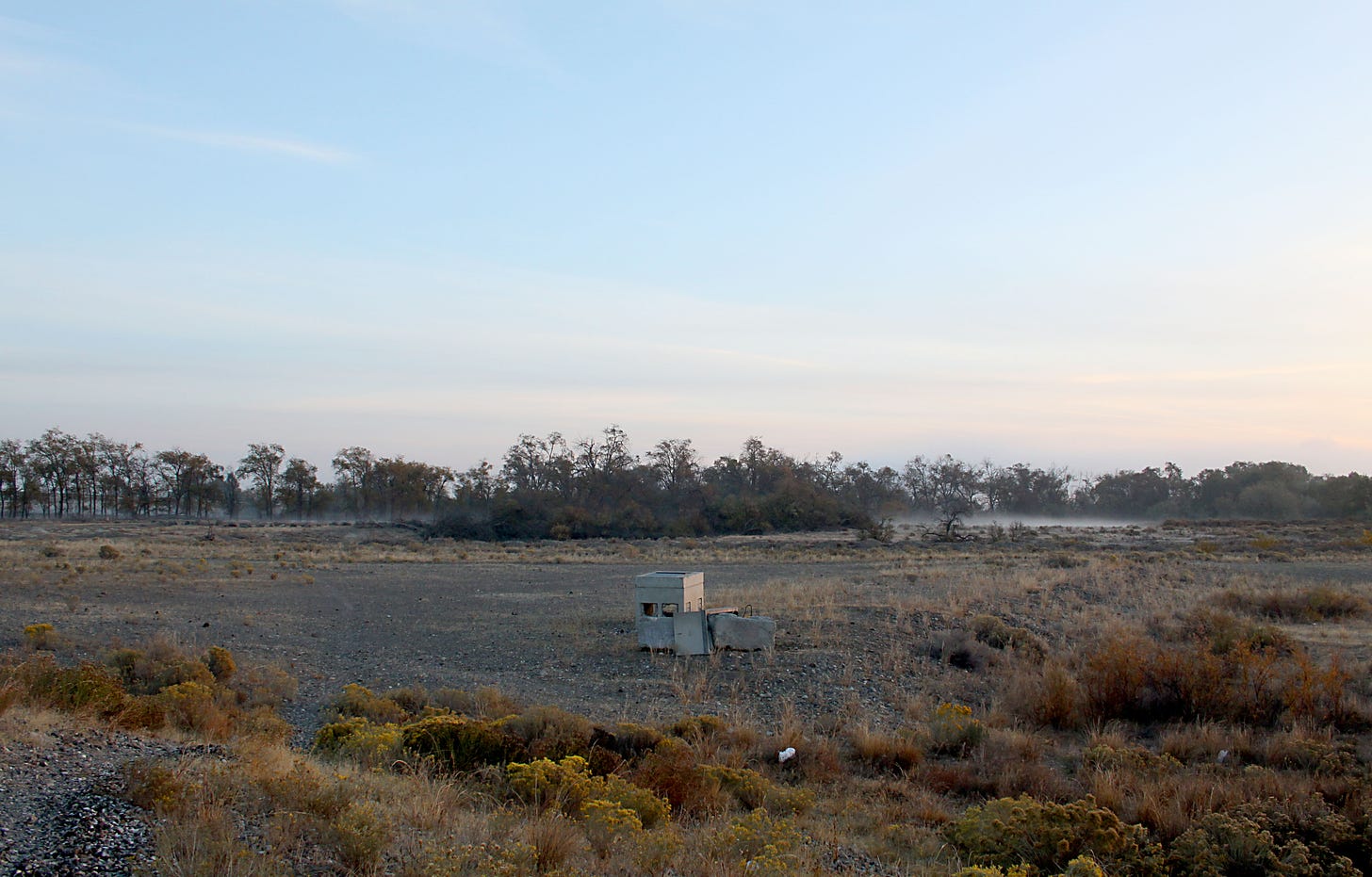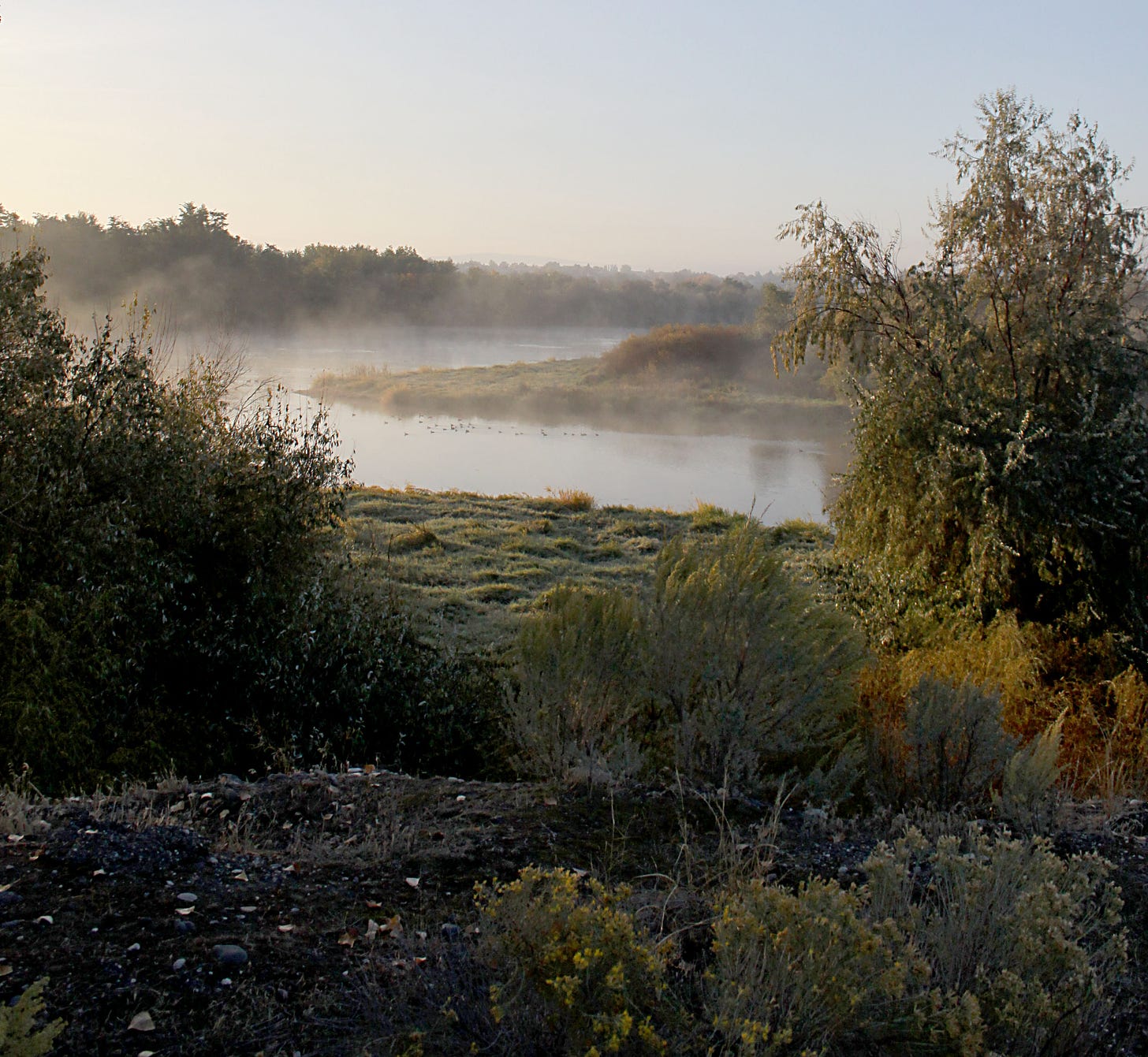This is Reading Photographs, a newsletter for those interested in remarkably mundane photographs and why the details, ideas, emotions, memories, connections and beliefs they arouse make them meaningful.
There is a nature preserve smack in the middle of the community my wife and I have lived in for the past 12 years.
The nature preserve is a river delta, where a smaller river feeds into a much larger one that eventually drains into the sea hundreds of miles away.
While we drove by the preserve daily on our way to work or for some other reason, we’d only had the opportunity to explore a small part of it once or twice early on. I was still shooting pretty regularly at this time, primarily with my digital kit, and looked for an opportunity to get out and take some shots, ideally during golden hour.
For the uninitiated, there are actually two “golden hours” each day—shortly after sunrise and shortly before sunset. They are so called because of the warm yet soft light cast upon the landscape and everything in it, a result of sunlight filtering through much more of the Earth’s atmosphere at that point than when it is higher in the sky. These “golden hours” naturally occur at different times depending on location and change daily as the planet’s tilt changes through the seasons. Fall and spring offer perhaps the most convenient golden hours outside equatorial regions, as they aren’t too late in the morning or too late into the evening.
Golden hour is what gives clouds their fantastic reds, pinks, oranges and purples that lead many to capture dramatic sunrises and sunsets. But photographers and cinematographers love golden hour because of the deep saturated colors and contrast it can render any subject while negating most need for flash. Portrait photographers use it to great effect to bring out the color of people’s eyes, make them stand out against a more shaded background. Landscape photographers love the drama it brings to any scene. Photographers who are all about capturing action, such as sport photographers, enjoy it because there can be enough light to freeze fast movement while still showing detail in the shadows.
This is why it is also called the “magic hour.” Anything is possible.
One Saturday morning in mid-October of 2013, I finally got out there. It was months after my wife and I had our wedding. And shortly after she miscarried our first child.
We weren’t really even trying—we just decided to throw caution to the wind once the rings were on our fingers and BOOM. Pregnant. When she told me I was stunned but also excited. Given her family’s fertility history we wondered if having a child was even possible outside medical intervention. She had detected it fairly early so she made a doctor appointment to verify. Within days I bought my first dad-focused parenting book, so eager to learn and fret over what was to come.
The doctor couldn’t detect signs of life within two weeks of us first learning about the pregnancy. Medically, this wasn’t a surprise—miscarriages are incredibly common, although our society and culture has constructed twisted narratives around why they happen or what causes them and how people should feel about them.
Nevertheless, my wife was devastated. I was devastated. For her. For us.
So I went on my photo walk in mid-October during the morning golden hour convinced that not anything was possible but desperately wanting to be convinced otherwise.
It was cold, as can be evidenced by the fog rolling low across the water and riverbank. I was smart enough to remember my tripod so I could focus more on composition than working to maintain a steady hand. I was pretty happy with what I came away with. And I was happy to have some photos to edit at home, so I could continue to be distracted from our sorrow.
A little over a year later, our oldest daughter was born. And then, three years after that, our youngest daughter. And now I drive them to school crossing through that preserve, passing the very spot where I stood eleven years ago. We’ve had family photoshoots in and near the preserve over the past decade. Rarely did we have them during golden hour, as lord knows we’re too exhausted to get the kids out there early or late enough in the day. But maybe someday.
Anything is possible.







